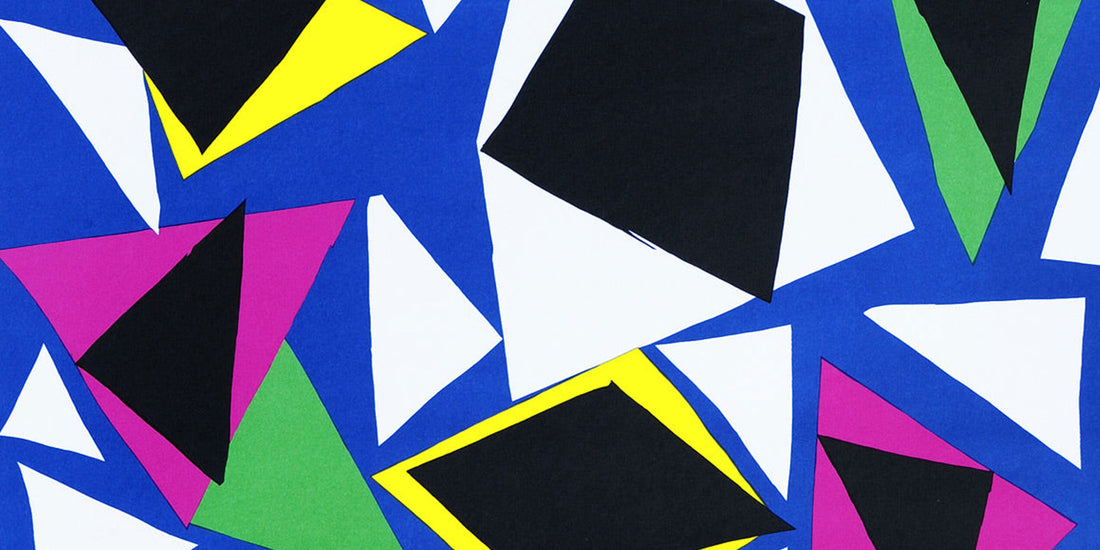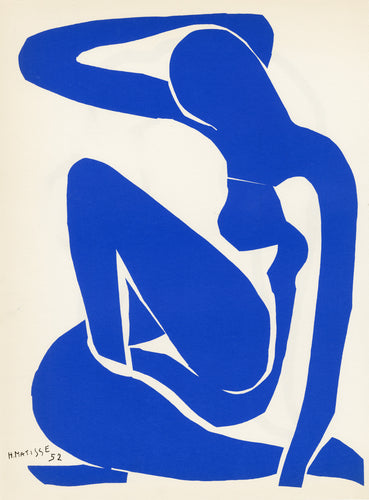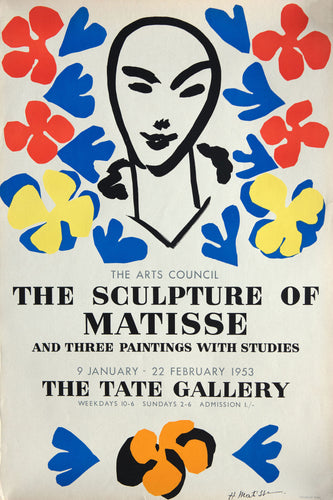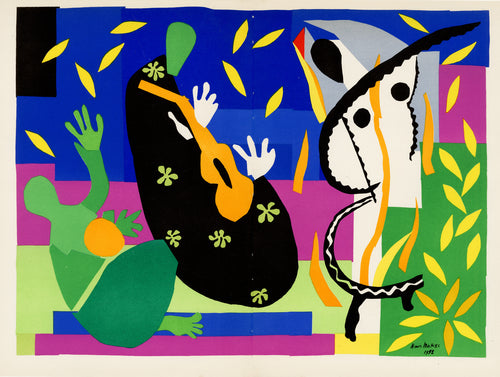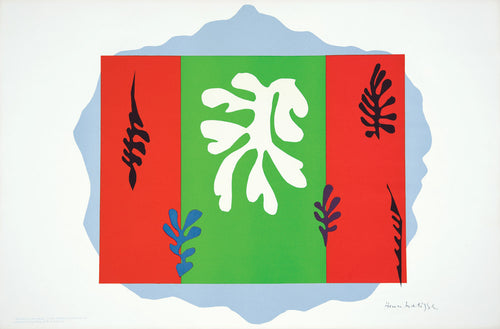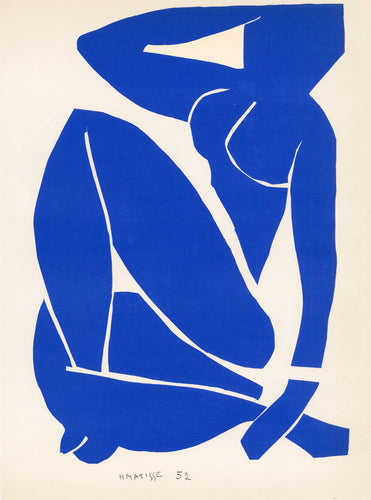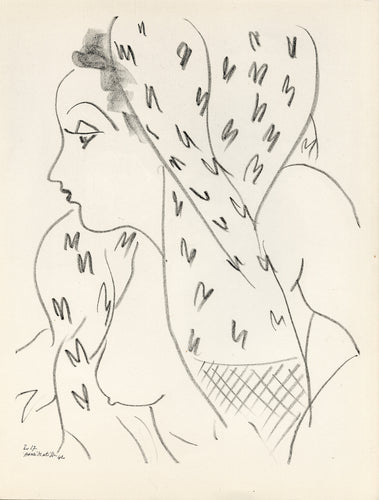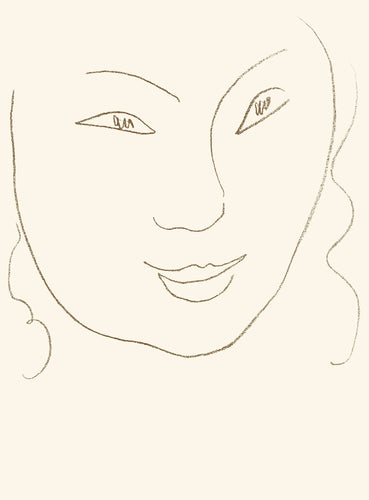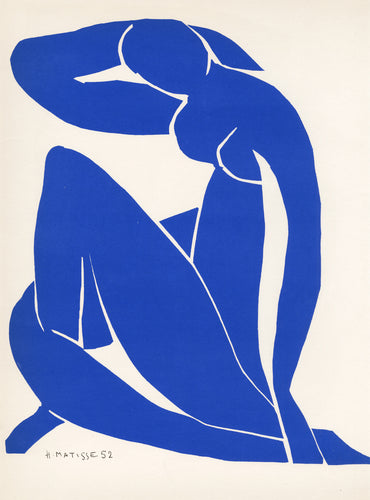Few artists have ever been so widely celebrated as Henri Matisse.
A leading luminary of the Fauvist school of painting, close friend of the notorious Picasso, and best known for his enormous papiers découpés cut-out collages, the shadow of Matisse’s extraordinary influence looms large over the 20th century art world.
 French artist Henri Matisse in his later years, drawing in studio
French artist Henri Matisse in his later years, drawing in studio
Born on 31st December 1869 to a wealthy, middle-class family in Picardy, Northern France, Matisse’s artistic talents were very nearly left undiscovered. As was expected of any son of well-to-do parents at the time, the young Henri initially enrolled to study law in Paris from 1887 to 1888.
Were it not for a bout of illness confining him to his rooms and the intervention of his mother, who provided him with painting materials throughout his convalescence, he may have fulfilled his father’s hopes of a career in the city. Yet by 1891, totally inspired by these few weeks of experimentation, Matisse had abandoned his profession and embarked on the heady career-path of becoming a full-time artist.
 'Le Lagoon I', one of Matisse's typically colourful late paper cut-outs for which he is best known
'Le Lagoon I', one of Matisse's typically colourful late paper cut-outs for which he is best known
After brief periods studying at the Académie Julian and the famed Ecole des Beaux-Arts, by 1901 Matisse’s considerable promise was self-evident. Exhibiting that year in the Salon des Indépendants in Paris, Matisse secured his first one-man show at the Galerie Vollard in 1904, owned by the ubiquitous publisher and collector Ambroise Vollard, one of the great champions, patrons and collaborators of modern art in the early 20th century.
 'Les Comodas', another late cut-out composition - the Codomas, the two yellow figures in the centre, were a well-known trapeze act; surrounding them are Matisse's characteristic flower motifs
'Les Comodas', another late cut-out composition - the Codomas, the two yellow figures in the centre, were a well-known trapeze act; surrounding them are Matisse's characteristic flower motifs
Matisse’s output at this time drew heavily from the late Impressionist and Post-Impressionist painters whose works he had been introduced to in the mid-to-late 1890s (Manet and Van Gogh remained instrumental in this early stage of development). But, by the turn of the century, these influences were being drawn from further afield: so-called ‘Primitive’ art – African and Chinese painting and sculpture – provided new perspectives and avenues of expression, as did the discovery of traditional Japanese calligraphy and woodblocks.
 Matisse's fascination with colour led to his exploration in the Fauvist style; here, elements of that style are continued in a later painting, with the unnaturally bright red table and central green vase
Matisse's fascination with colour led to his exploration in the Fauvist style; here, elements of that style are continued in a later painting, with the unnaturally bright red table and central green vase
It was around this time too that Matisse began his first ‘Fauvist’ paintings. So-named by critics of the movement for their ‘wild’ approach to painting (‘fauve’ translates to ‘beast’ in English), the Fauves painted in bright, bold, and unnatural colour, imbuing their landscapes and still lifes with a vibrancy that overwhelmed conservative commentators and art institutions.
Matisse, alongside André Derain, Raoul Dufy, and Maurice de Vlaminck, was considered one of the originators of the movement, and though Fauvism would only last a few years throughout the 1910s, the principles of colour theory which underpinned this work would stay with the artist for the rest of his life.
 an example from Matisse's 'Ronsard' suite of his forays into the world of lithography
an example from Matisse's 'Ronsard' suite of his forays into the world of lithography
In the years following the First World War Matisse began to expand his artistic repertoire, in particular turning his eye for colour and his fluid use of line to printmaking. French poetry, both modern and medieval, provided the inspiration for his most significant suites, the first literary illustrations he produced being a series of etchings for Stéphane Mallarmé’s Poésies (‘Poems’) in 1932.
 the artist meets with the Mourlot Frères in their Paris atelier as they examine a recent pull of lithographs
the artist meets with the Mourlot Frères in their Paris atelier as they examine a recent pull of lithographs
Dividing his time between Paris and the South coast, Matisse developed a daily habit of reading before beginning his work. Poetry was, for the artist, a kind of creative oxygen: ...just as you leap out of bed and fill your lungs with fresh air, he remarked, so one should fill oneself with poetry.
With the advent of the 1940s, this creative drive came to full fruition. Matisse had already met Fernand Mourlot, owner of the renowned lithographic firm the Mourlot Frères, before the pair first established a working relationship together that would last until the artist’s final days.

 (above) two portraits from the 'Poèmes de Charles d’Orleans' suite; (below) Matisse penned d'Orleans text in his own hand, his loose calligraphy matching the relaxed style of his portraiture and his accompanying fleurs-de-lis
(above) two portraits from the 'Poèmes de Charles d’Orleans' suite; (below) Matisse penned d'Orleans text in his own hand, his loose calligraphy matching the relaxed style of his portraiture and his accompanying fleurs-de-lis
Aided by the Mourlot brothers’ keen hands and eyes and their immense industry, Matisse produced three more suites based on French poetic texts: the complex Florilège des Amours Ronsard, illustrations of the love poems of the 16th Century French Renaissance poet Pierre de Ronsard (1941); illustrations for the Poèmes de Charles d’Orleans, with text written in Matisse’s own hand; and the 1946 Visages suite, a series of 14 lithographs with accompanying poetry by the contemporary French poet Pierre Reverdy.
Characterised by a clarity of line and calligraphic touch, these lithographic suites demonstrate the assurance of Matisse's draughtsmanship and the power of his restraint (count how few lines make up each face).

 (above) another example from the 'Ronsard' suite, evidencing Matisse's confident use of line; (below) a debilitated Matisse draws from his bed using an improvised staff
(above) another example from the 'Ronsard' suite, evidencing Matisse's confident use of line; (below) a debilitated Matisse draws from his bed using an improvised staff
But despite being arguably his most productive years, the early 1940s were paradoxically also Matisse’s most debilitating. After it was discovered that he was suffering from abdominal cancer, Matisse underwent two major operations in 1941 and ’42. The surgery left him chair-bound and bedridden, restricting his ability to paint and confining him for the larger part to his rooms where he relied on the help of assistants to continue his work.

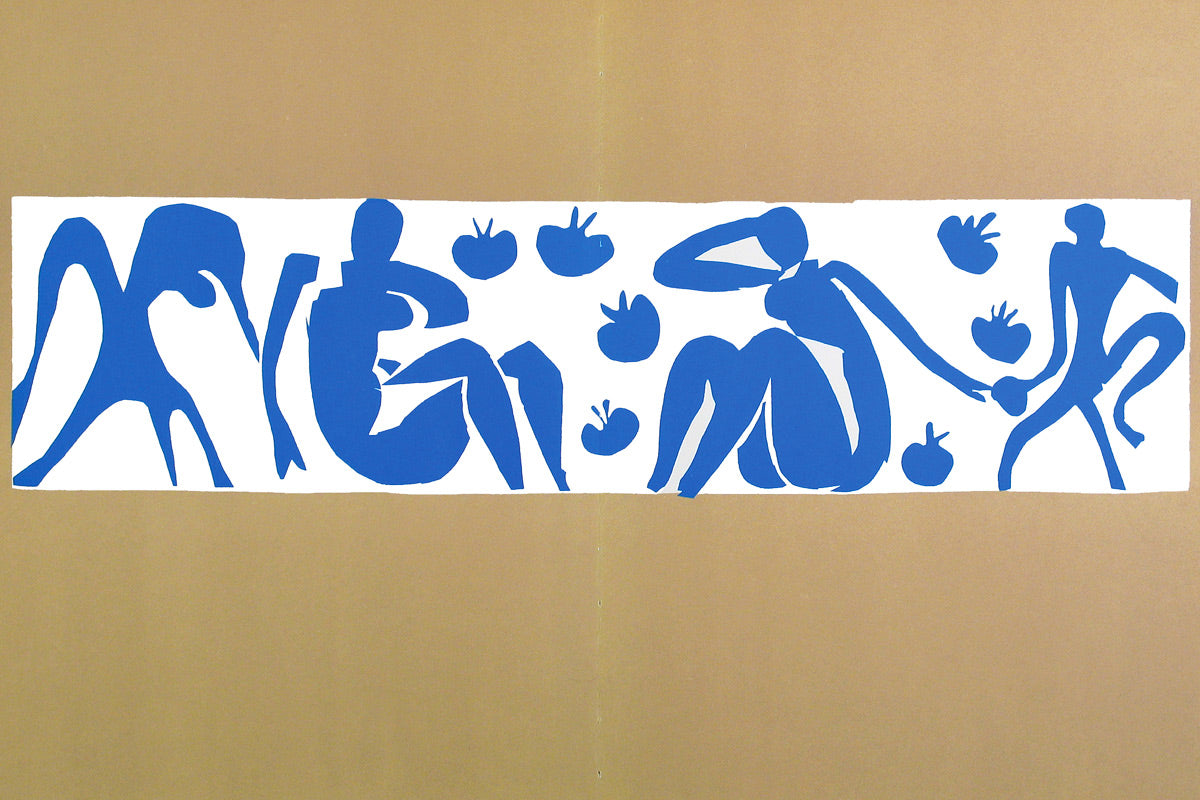 (above) Matisse in his wheelchair surrounded by the cut-out remains of his stencils (left) and 'The Fall of Icarus' (right); (below) 'Femmes et Singes' ('Women and Monkeys')
(above) Matisse in his wheelchair surrounded by the cut-out remains of his stencils (left) and 'The Fall of Icarus' (right); (below) 'Femmes et Singes' ('Women and Monkeys')
Although clearly undergoing severe physical trauma, Matisse seized the opportunity his illness had given him of developing new techniques that would allow him to continue to create art from the comfort of his wheelchair.
Unable to work directly on a canvas himself, he devised a method by which assistants would paint pieces of paper with colourful gouache which he would then transform with a pair of scissors into cut-out shapes. These 'paper cut-outs', or papiers découpés, began small but were soon covering the high walls of his apartment, with bright birds, flowers and dancing figures spread around the room (so bright, it has been said, that Matisse's doctor felt moved to warn the artist to wear dark glasses when handling the gouache sheets).

 (above) 'Le Destin' ('destiny'); (below) 'Zulma' (left) and 'Végétaux' ('vegetables', right)
(above) 'Le Destin' ('destiny'); (below) 'Zulma' (left) and 'Végétaux' ('vegetables', right)
The flat colour of each paper stencil and the restriction of working with scissors to shape each sheet lent these compositions a strong abstract style, more simplified and pronounced than any of Matisse's earlier canvases. The directness of the cutting process, in which the line and body of each shape were being formed simultaneously, greatly excited Matisse: Instead of drawing an outline and filling in the colour, I am drawing directly in colour... Scissors can acquire more feeling for line than pencil or charcoal.

 (above) 'Le Cirque', from the 'Jazz' suite; (below) two figures from the famous 'Nu Bleu' series
(above) 'Le Cirque', from the 'Jazz' suite; (below) two figures from the famous 'Nu Bleu' series
Keen to make these (often huge) compositions more readily accessible to the public, Matisse worked closely again with the Mourlot Frères atelier to reinterpret the collages as lithographic suites. Jazz, written and illustrated by Matisse, was published in 1947, each of the 39 plates a reduced stencil reproduction of the larger paper cutouts.
In the very last years of his life, the two collaborators agreed on a final suite of lithographic reproductions titled The Last Works: bringing a selection of what are now widely regarded as Matisse's most important large-scale cut-outs, full of levity, warmth, youth and colour, the series stands as a final testament to the sheer artistic strength and facility of an aging an ailing man.
 (above) 'Le Cowboy'; (below) 'L'Escargot' ('the snail'), perhaps one of Matisse's best-known works
(above) 'Le Cowboy'; (below) 'L'Escargot' ('the snail'), perhaps one of Matisse's best-known works
A major retrospective of Matisse's work was held at the Museum of Modern Art, New York in 1951, and a year later the Musée Matisse was established in Le Cateau–Cambrésis, the artist's birthplace. Matisse continued to make his paper cutouts until his death in November 1954 in Nice. Since then his reputation has only gained in popularity, the Tate's 2014 exhibition of the final paper cut-outs in London attracting a record 500,000 visitors to the gallery and becoming its most successful show to date.
 two posthumous artist's posters advertising exhibitions for the printed works (left) and the paper cut-outs (right) of Matisse
two posthumous artist's posters advertising exhibitions for the printed works (left) and the paper cut-outs (right) of Matisse
A giant in the history of French art, Matisse's extraordinary influence is perhaps best captured by the words of fellow innovator Pablo Picasso: All things considered, there remains only Matisse.
